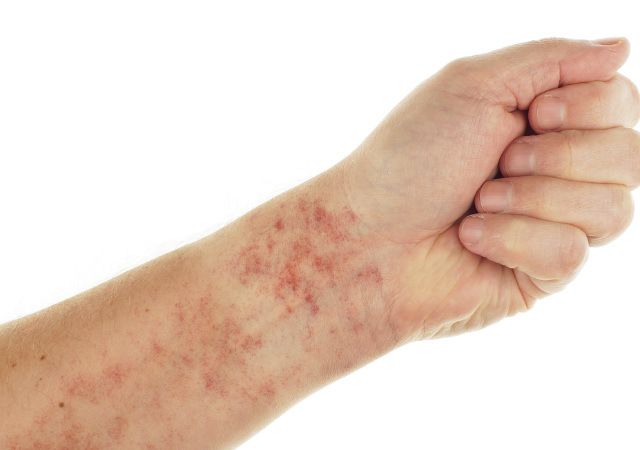How to increase platelet count in ITP(Immune thrombocytopenic purpura)
WHAT IS ITP?
ITP known as Immune thrombocytopenic purpura is a rare immune disorder in which the immune system destroys circulating platelets, which are necessary and helpful for normal blood clotting. In this disorder, the person can lead to easy or excessive bruising (purpura) and bleeding from capillaries into the skin and mucous membranes. The bleeding results in the unusually low levels of platelets or thrombocytes in the blood.
ITP occurs when immune system cells produce antibodies against platelets. The antibodies attach to the platelets. The body destroys the platelets that carry the antibodies.
Formerly known as idiopathic thrombocytopenic purpura, is now more commonly referred to as immune thrombocytopenia (ITP). ITP can cause purple bruises, as well as tiny reddish-purple dots that look like a rash on the skin.
Platelets are produced in the bone marrow. They help stop bleeding by clumping together to form a clot that seals cuts or small tears in blood vessel walls and tissues. If your blood doesn’t have enough platelets, it’s slow to clot. Internal bleeding or bleeding on or under the skin can occur.

HOW MUCH SHOULD BE THE PLATELET COUNT
A healthy person usually has a platelet count of 150,000 to 400,000. You have thrombocytopenia if your number falls under 150,000.
CAUSES OF ITP
- In children, the disease sometimes follows a viral infection.
- In adults, it is more often a long-term (chronic) disease and can occur after a viral infection, with the use of certain drugs, during pregnancy, or as part of an immune disorder.
- In association with another illness, such as lupus or HIV (human immunodeficiency virus)
SYMPTOMS
ITP symptoms can include any of the following:
- Abnormally heavy periods in women
- Bleeding into the skin, often around the skin, causing a skin rash that looks like pinpoint red spots (petechial rash)
- Easy & excessive bruising (purpura)
- Nosebleed or bleeding from the mouth
- Blood in urine or stool
TESTS
Blood tests will be done to check your platelet count
Bone marrow aspiration or biopsy may also be done.
HOW TO INCREASE PLATELET COUNT NATURALLY
The power of a healthy lifestyle is undeniable for anyone. While there’s no single diet or regimen that will relieve the symptoms of ITP, you can support your immune system by making your lifestyle a healthier one:

IRON RICH FOODS
Iron is essential to your body’s ability to produce healthy blood cells. It is helpful in increasing platelet counts in a person with iron-deficiency anemia. You can find high levels of iron in certain foods, including:
- Oysters
- Beef Liver
- Fortified Breakfast Cereals
- Raisins
- Beetroot
- Pomegranate
- White Beans And Kidney Beans
- Dark Chocolate
- Lentils
- Tofu
Folate Rich Food
Folate is an essential B vitamin for healthy blood cells.Folic acid is the synthetic form of folate. It appears naturally in many foods, and it can added to others in the form of folic acid
Foods containing folate or folic acid include:
- Dark, Leafy Green Vegetables, Such As Spinach And Brussels Sprouts
- Beans
- Black-Eyed Peas
- Fortified Breakfast Cereals And Dairy Alternatives
- Rice
- Yeast
- Peanuts
- Oranges Or Orange Juice
Eating lots of folate-rich foods does not cause problems. But consumption of excessive amounts of folic acid from supplements can interfere with vitamin B-12 so person one needs to be careful.
VITAMIN B-12 RICH FOODS
Vitamin B-12 is necessary for the formation of red blood cells and helps keep these blood cells healthy.
Low levels of B-12 in the body may also contribute to low platelet counts.
People aged 14 and over and Pregnant and breastfeeding women require high amount of Vitamin B12.
Vitamin B-12 is present in certain foods, including:
- Eggs
- Fish
- Fortified Cereals
- Fortified Dairy Alternatives Such As Almond Milk Or Soy Milk
VITAMIN C-RICH FOODS
Vitamin C plays a vital role in the proper functioning of the immune system. Vitamin C also helps the platelets to work correctly and enhances the body’s ability to absorb iron, which is another essential nutrient helping which helps to increase platelets.
Many fruits and vegetables contain vitamin C, including:
- Broccoli
- Brussels Sprouts
- Citrus Fruits, Such As Oranges And Grapefruits
- Kiwifruit
- Beetroot
- Red And Green Bell Peppers
- Amla (Indian Gooseberry)
- Strawberries
- Lemons
- Mangoes
- Pineapple
- Tomatoes
- Cauliflower
Note that heat destroys vitamin C, so it may be best to eat vitamin C-rich foods raw when possible.
VITAMIN D-RICH FOODS
Most of the people must be known about the fact that Vitamin D contributes to the proper functioning of the bones, muscles, nerves, and immune system. Vitamin D also plays an essential role in the function of the bone marrow cells that produce platelets and other blood cells.
The body can produce vitamin D from sun exposure, but not everybody receives enough sunlight each day, especially if they live in colder climates. Adults aged 19 to 70 require a moderate amount of vitamin D daily.
Food sources of vitamin D include:
- Egg Yolk
- Fish Liver Oils
- Fortified Yogurt
- Fortified Breakfast Cereals
- Fortified Orange Juice
- Fortified Dairy Alternatives, Such As Soy Milk And Soy Yogurt
- Mushrooms
VITAMIN K-RICH FOODS
Vitamin K has also known as an essential vitamin for blood clotting and bone health. People who take vitamin K can see an improvement in their platelet counts and bleeding symptoms.
Adequate intake of vitamin K for adults, aged 19 and over is essential for both men as well as women.
Foods rich in vitamin K include:
- A Fermented Soybean Dish
- Leafy Greens, Such As Collards, Turnip Greens, Spinach, Parsley And Kale
- Broccoli
- Okra
- Asparagus
- Mustard Greens
- Soybeans And Soybean Oil
- Pumpkin
- Cabbage
VITAMIN A RICH FOODS
Vitamin A is essential for healthy platelet production. This nutrient is known to be significant for protein formation in the body. Healthy protein content in the body helps in the process of cell division and growth. Some of the foods that you should ideally add to your daily diet may include
- Carrot
- Pumpkin
- Kale
- Sweet Potatoes.
INDICATIONS
Avoid certain things which have been mentioned below:
- Canned and frozen foods and leftovers
- White flour, white rice and processed foods
- Hydrogenated, partially hydrogenated or trans-fats
- White Refined Sugar
- Dairy products
- Meat
- Alcoholic beverages




